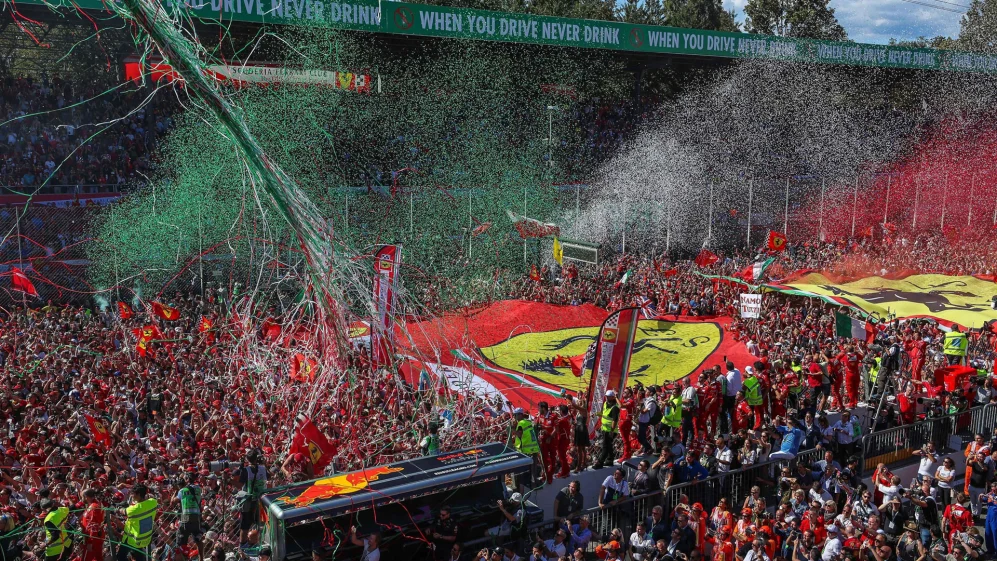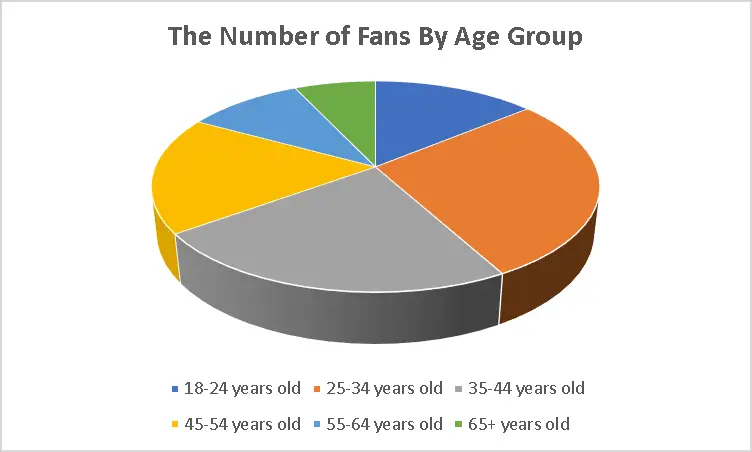Formula One (F1) is more than just a sport. It is a passion, a lifestyle, a culture. For millions of fans around the world, F1 is a source of inspiration, excitement, and joy. F1 fans are not just spectators, they are participants. They cheer, they cry, they celebrate, they suffer with their favorite drivers and teams. They are part of the F1 family.
But which countries have the most F1 fans? And how do they express their love and devotion for the sport? In this article, we will explore some of the data and statistics that reveal the global fan base of F1. We will also look at some of the stories and experiences that make F1 fans unique and special.
Whether you are a die-hard fan or a curious newcomer, you will discover the amazing diversity and richness of F1 fandom. You will learn how F1 fans watch and engage with the sport on different platforms and channels, how they support and interact with their heroes and idols, and how they share and spread their passion and enthusiasm for F1.
Join us on this journey to discover the countries with the most F1 fans, and find out why F1 is more than just a sport. It is a passion.
The Countries Where the Most F1 Fans Watch F1 on TV
One of the main ways that F1 fans enjoy the sport is by watching it on TV. According to Formula 1, the cumulative TV audience for 2021 was 1.55 billion, up 4% from the 2020 season.
The season finale in Abu Dhabi drew 108.7 million viewers, the highest viewing figures for a race during the season.
The season opener in Bahrain (84.5 million), and the three Sprint weekend events also saw strong audiences.. These were
- Silverstone (79.5 million)
- Monza (80.4 million)
- Sao Paulo (82.1 million)
The biggest market in terms of TV unique viewers (the number of individuals that tune into at least one race during the season) was China, with 70.8 million unique viewers in 2021, up 13% from 2020. Other markets that had significant year-on-year gains in TV unique viewers were
- Spain (+272%)
- Russia (+129%)
- USA (+53%).
The Netherlands stood out with an increase of +81% year-on-year in season cumulative audience, thanks to the popularity of Max Verstappen, who won his first world championship title in 2021.
Other markets that saw significant rises in season cumulative audience are listed below

- USA (+58%)
- France (+48%)
- Italy (+40%)
- UK (+39%).
Globally, the average audience per Grand Prix in 2021 was 70.3 million. Looking only at markets where like-for-like broadcasting arrangements were maintained across 2020 and 2021, the figure was 60.3 million, up +13% year-on-year, and the highest figure since 20131.
The Countries Where the Most Fans Watch F1 on Social Media
Another way that F1 fans follow the sport is by watching it on social media platforms, such as Facebook, Twitter, Instagram, YouTube, TikTok, Snapchat, Twitch and Chinese social platforms.

According to Formula 1, F1 was the fastest-growing major sports league on the planet in terms of follower growth in 2021.
F1 now has 49.1 million total followers and has seen the highest engagement rate with social posts compared to other major sports in 2021.
In 2021, followers were up 40% to 49.1 million, video views up 50% to 7 billion and total engagement up 74% to 1.5 billion.
Additionally, total video views across F1.com were as follows.
- F1 app and social media were up 44% vs 2020 to 7.04 billion
- Unique users were up +63% to 113 million.
- Page views were up +23% to 1.6 billion.
In China, F1 saw very strong digital growth with followers on Chinese platforms (Weibo, WeChat, Toutiao and Douyin) up 39% to 2.7 million.
The results mean that Formula 1 is outperforming other major sports in the digital arena. The digital share of total minutes consumed (across broadcast and digital) has grown from 10% in 2020 to 16% in 2021.
Countries Which Have Hosted The Most F1 Races

Another indicator of the popularity of F1 in different countries is the number of races that they have hosted over the years. According to Statista, as of December 2020,
- Italy had hosted the most F1 races with a total of 100 races since its debut in 1950.
- Germany (78 races)
- Great Britain (75 races)
- Monaco (67 races)
- France (60 races).
Some of the most iconic and historic circuits in F1 are located in these countries, such as Monza, Nürburgring, Silverstone, Monaco and Magny-Cours.
These circuits have witnessed some of the most memorable moments and battles in F1 history, and have attracted huge crowds of passionate fans.
The F1 Races That Had the Most Attendance in 2022
F1 successfully and safely delivered a record-breaking 22-race calendar in 2021, including new venues and a revised format at three races with the new Sprint events.
The season was thrilling for all the fans around the world, and some of the races had impressive attendance figures.
According to Formula 1 three Grands Prix had an attendance of more than 300,000 spectators over the race weekend.
- USA (400,000)
- Mexico (371,000)
- Great Britain (356,000)
The USA, Mexico and Great Britain welcomed more fans than in 2019, the last time full capacities were possible, with previous attendances being 268,000, 348,000 and 351,000 people, respectively.
Other races that had high attendance figures in 2021 were
- Brazil (305,000)
- Italy (250,000)
- Russia (240,000)
- Hungary (200,000)
These numbers show the enthusiasm and excitement that F1 fans have for the sport. It also shows their willingness to support their favorite drivers and teams in person.
The Number of F1 Fans by Age Group
F1 fans come from different age groups and generations, but some of them are more prevalent than others. According to Statista, as of October 2020, the age group profile of F1 fans worldwide was

These numbers suggest that F1 has a relatively young and diverse fan base, with a strong presence of millennials and Gen Z.
F1 has been making efforts to appeal to these younger audiences. They have introduced teh following
- New formats, such as Sprint events
- New venues, such as Saudi Arabia and Miami
- New digital platforms, such as Netflix’s Drive to Survive series.
The Number of Viewers Aged 16-35
One of the key target groups for F1 is the viewers aged 16-35, who represent the future of the sport. According to Formula 1, this age group accounted for 43% of all viewers in 2021.
It is a significant increase from 2019, when this age group represented only 34% of all viewers.
This shows that F1 is succeeding in attracting and engaging younger viewers, who are more likely to watch F1 on digital platforms and social media.
F1 has also been investing in esports and gaming initiatives, such as the F1 Esports Series and the F1 Mobile Racing game. The intent is to reach out to this audience segment.
The Number of Viewers Aged 36 and Older
Another important group for F1 is the viewers aged 36 and older, who represent the core and loyal fan base of the sport. According to Formula 1, this age group accounted for 57% of all viewers in 2021.
This is a slight decrease from 2019, when this age group represented 66% of all viewers.
This shows that F1 is maintaining its appeal among older viewers, who are more likely to watch F1 on TV and follow the traditional aspects of the sport.
F1 has also been celebrating its rich heritage and legacy by honoring its legends and milestones, such as Sir Lewis Hamilton’s record-breaking achievements and Michael Schumacher’s induction into the Hall of Fame.
Conclusion
F1 is a global sport that has millions of fans from different countries and regions. They watch and engage with the sport on various platforms and channels, such as TV, social media, digital platforms, esports and gaming.
F1 fans also come from different age groups and generations, but some of them are more prevalent than others. F1 has been making efforts to cater to its diverse fan base by introducing new formats, venues and initiatives that enhance the excitement and spectacle of the sport.

